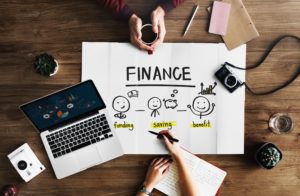When saving for a house make sure to avoid personal loans at all costs. If you currently have any it may be wise to get them paid off as soon as possible. Turning to short-term loans to cover emergency expenses puts home ownership even further out of the reach of vulnerable Australians.

Borrowers who are unaware of the impact personal loans can have on their credit scores are facing difficulties applying for a home loan further down the line.
Financial comparison website Finder has shown that one in 10 Australians who take out personal loans do so to meet unplanned financial difficulties. These emergencies could be unexpected medical expenses, or unexpectedly large phone or power bills.
“You don’t want a personal loan to be your only option when faced with a crisis,” said Finder’s Bessie Hassan. “An emergency savings fund should be your ‘plan-A’ not a personal loan.”
High-risk borrowers with low credit scores could find themselves slugged with the highest rates and end up paying considerably more interest on a home loan.
Borrowers with a poor credit score and high-risk profile will pay $10,000 more in repayments over the life of a five-year, $30,000 loan than those with an excellent credit score and low-risk profile, according to Finder. For borrowers facing unplanned emergency expenses, this financial double-whammy can make it more expensive and harder to escape the debt trap.
Failing to pay back personal loans, or stacking multiple personal loans and credit cards can seriously affect credit ratings, making further borrowing increasingly expensive and pushing back home ownership dramatically.
Good v Bad Debt
The most common reasons people took out personal loans were to fund car purchases, prepare for a baby, pay for a holiday or home renovations, or buy jet skis or snowboards, according to Finder data.
Carsten Murawski, economist in the Brain, Mind & Markets Laboratory at the University of Melbourne, said the findings were concerning, but predictable.“The worry with an increase in debt is that debt is being used to fund consumption,” he said. Murawski said any conversation around borrowing needed to include the concepts of “good” and “bad” debt.
“Good debt is to buy an asset or an income stream,” he said. “Bad debt is debt that’s used for consumption purposes.” He said buying a house or a car for work, or financing a renovation could be a good way to use debt. But taking out personal loans to pay for power bills, holidays or consumer spending was a bad way to use debt.
Nine per cent of Australians use personal loans to fund home renovations, with some choosing them as the application process is simpler than other methods. Previous Finder research has found the most renovated room in Australian houses was the kitchen, with 19 per cent reporting they’d spent on average $16,883.
Murawski said about 1 in 10 Australians had less than $3000 in savings to cover emergency expenses, meaning unexpected costs would need to be covered by a loan.
People need to be aware there are more options for those who find themselves in difficult situations, such as the hardship repayment plans many utility companies offer. It may also be an idea to look at no-cost microfinance providers such as no interest loans schemes.
Source: domain.com.au
Photo by rawpixel.com from Pexels

© Northpoint Mortgage & Finance
Legal | Privacy Policy | Compliments & Concerns
Credit Representative Number 460918 is authorised under Australian Credit Licence 389328.
Your full financial situation and requirements need to be considered prior to any offer and acceptance of a loan product.
